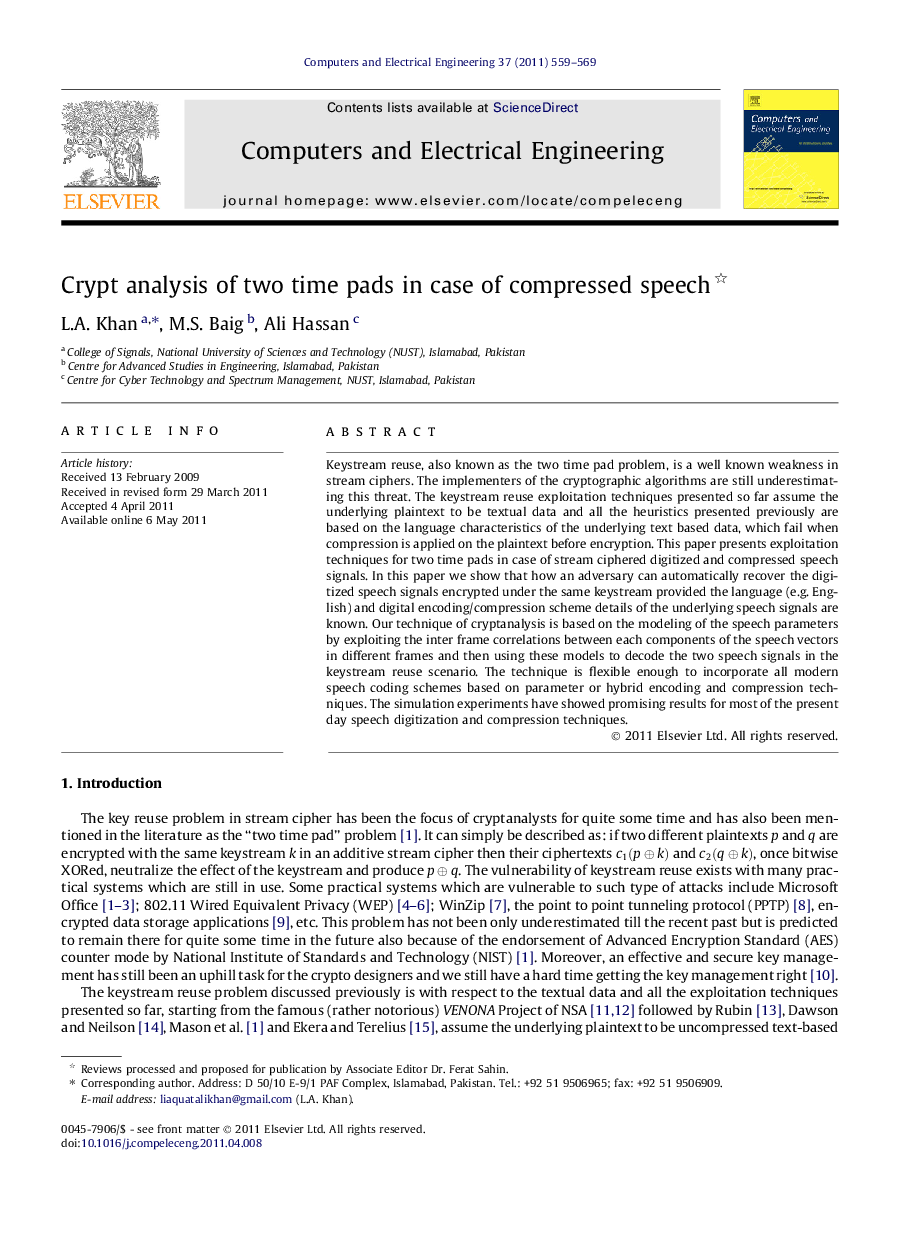| کد مقاله | کد نشریه | سال انتشار | مقاله انگلیسی | نسخه تمام متن |
|---|---|---|---|---|
| 455209 | 695349 | 2011 | 11 صفحه PDF | دانلود رایگان |

Keystream reuse, also known as the two time pad problem, is a well known weakness in stream ciphers. The implementers of the cryptographic algorithms are still underestimating this threat. The keystream reuse exploitation techniques presented so far assume the underlying plaintext to be textual data and all the heuristics presented previously are based on the language characteristics of the underlying text based data, which fail when compression is applied on the plaintext before encryption. This paper presents exploitation techniques for two time pads in case of stream ciphered digitized and compressed speech signals. In this paper we show that how an adversary can automatically recover the digitized speech signals encrypted under the same keystream provided the language (e.g. English) and digital encoding/compression scheme details of the underlying speech signals are known. Our technique of cryptanalysis is based on the modeling of the speech parameters by exploiting the inter frame correlations between each components of the speech vectors in different frames and then using these models to decode the two speech signals in the keystream reuse scenario. The technique is flexible enough to incorporate all modern speech coding schemes based on parameter or hybrid encoding and compression techniques. The simulation experiments have showed promising results for most of the present day speech digitization and compression techniques.
This paper presents the first ever attempt of crypt analysis of two time pads in case of compressed speech. The language modeling and smoothing techniques have been modified to model the inter-frame correlations between different parameters of Code Exited Linear Prediction based encoded speech signals. Hidden Markov models with Viterbi decoding have been used to extract the two different speech signals stream-enciphered under the same key stream.Figure optionsDownload as PowerPoint slide
Journal: Computers & Electrical Engineering - Volume 37, Issue 4, July 2011, Pages 559–569